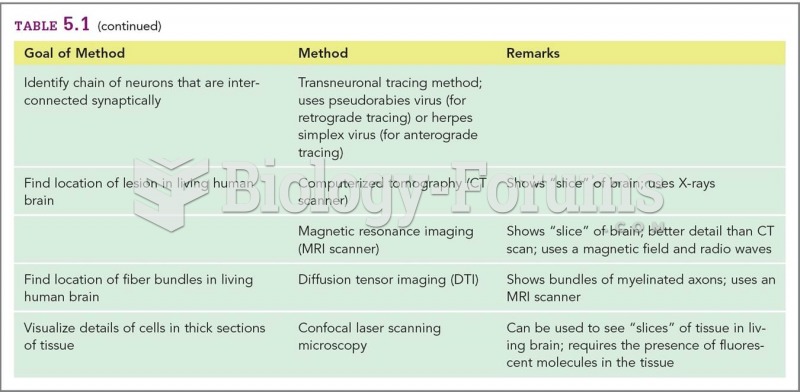Answer to Question 1
Electroencephalograms (EEGs) are recordings of the electrical frequencies and intensities of the living brain, typically recorded over relatively long periods. Through EEGs, it is possible to study brainwave activity indicative of changing mental states such as deep sleep or dreaming. To obtain EEG recordings, electrodes are placed at various points along the surface of the scalp. The electrical activity of underlying brain areas is then recorded. The information, therefore, is not localized to specific cells. The EEG is sensitive to changes over time. For example, EEG recordings taken during sleep reveal changing patterns of electrical activity involving the whole brain. Different patterns emerge during dreaming versus deep sleep. EEGs are also used to diagnose epilepsy because they can indicate whether seizures appear in both sides of the brain at the same time, or whether they originate in one part of the brain and then spread.
To relate electrical activity to a particular event or task (e.g., seeing a flash of light or listening to sentences), EEG waves can be measured when participants are exposed to a particular stimulus. An event-related potential (ERP) is the record of a small change in the brain's electrical activity in response to a stimulating event. The fluctuation typically lasts a mere fraction of a second. ERPs provide good information about the time- course of task-related brain activity. In any one EEG recording, there is a great deal of noisethat is, irrelevant electrical activity going on in the brain. ERPs cancel out the effects of noise by averaging out activity that is not task-related. Therefore, the EEG waves are averaged over a large number (e.g., 100) of trials to reveal the ERPs. The resulting wave forms show characteristic spikes related to the timing of electrical activity, but they reveal only general information about the location of that activity (because of low spatial resolution as a result of the placement of scalp electrodes).
Answer to Question 2
Head injuries are of two types. In closed-head injuries, the skull remains intact, but there is damage to the brain, typically from the mechanical force of a blow to the head. Slamming one's head against a windshield in a car accident might result in such an injury. In open-head injuries, the skull does not remain intact but rather is penetrated, for example, by a bullet.
Damage resulting from head injury can include spastic movements, difficulty in swallowing, and slurring of speech, as well as many other cognitive and behavioral problems. Cognitive symptoms can vary widely, depending on the area of the brain that is affected. Patients may experience concentration problems, may have difficulty understanding others or speaking and putting their own thoughts in words, may find it hard to understand abstract concepts, or may have trouble remembering things.






![Good Old War - Part Of Me [Audio]](https://biology-forums.com/gallery/35/medium_6_10_02_18_10_47_07.jpg)
